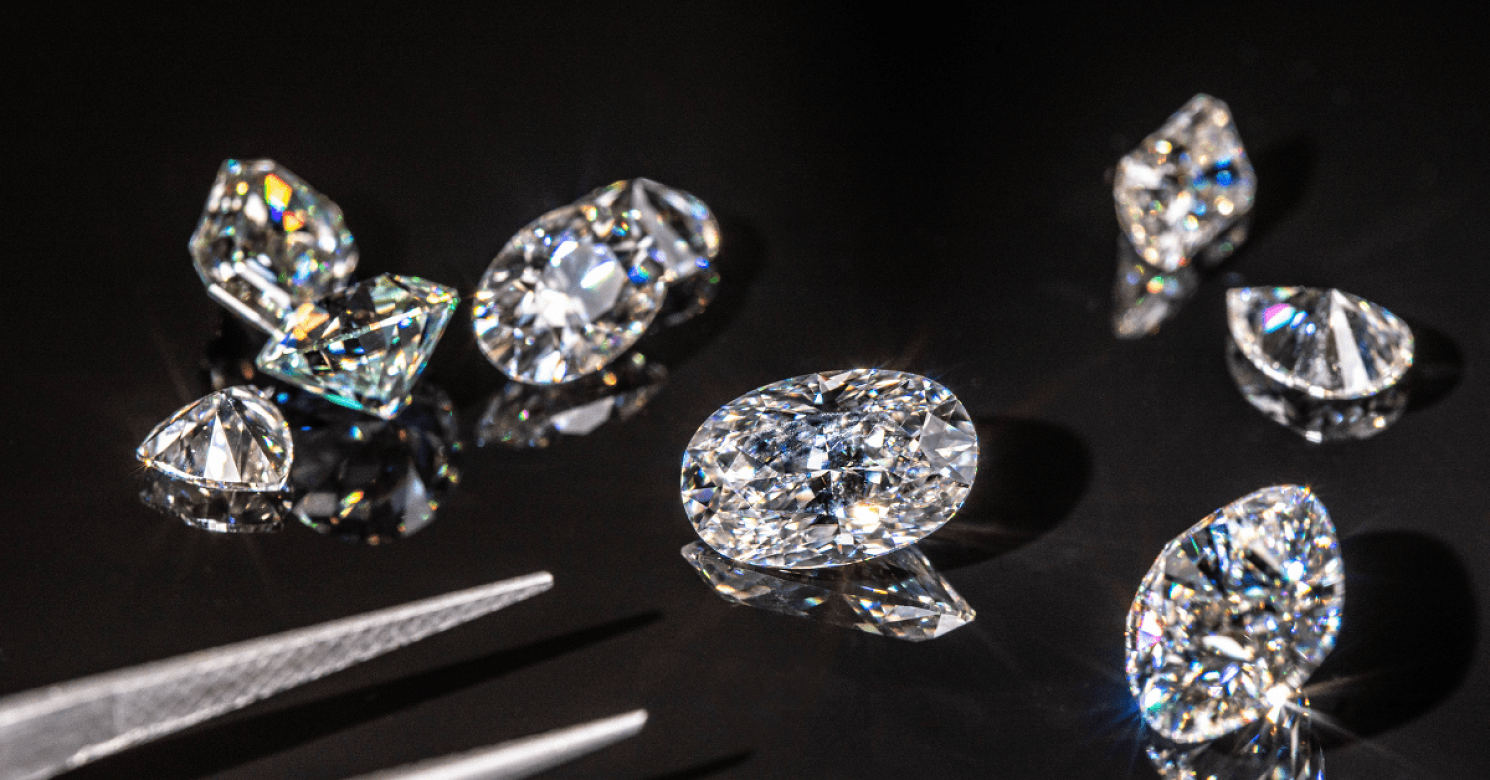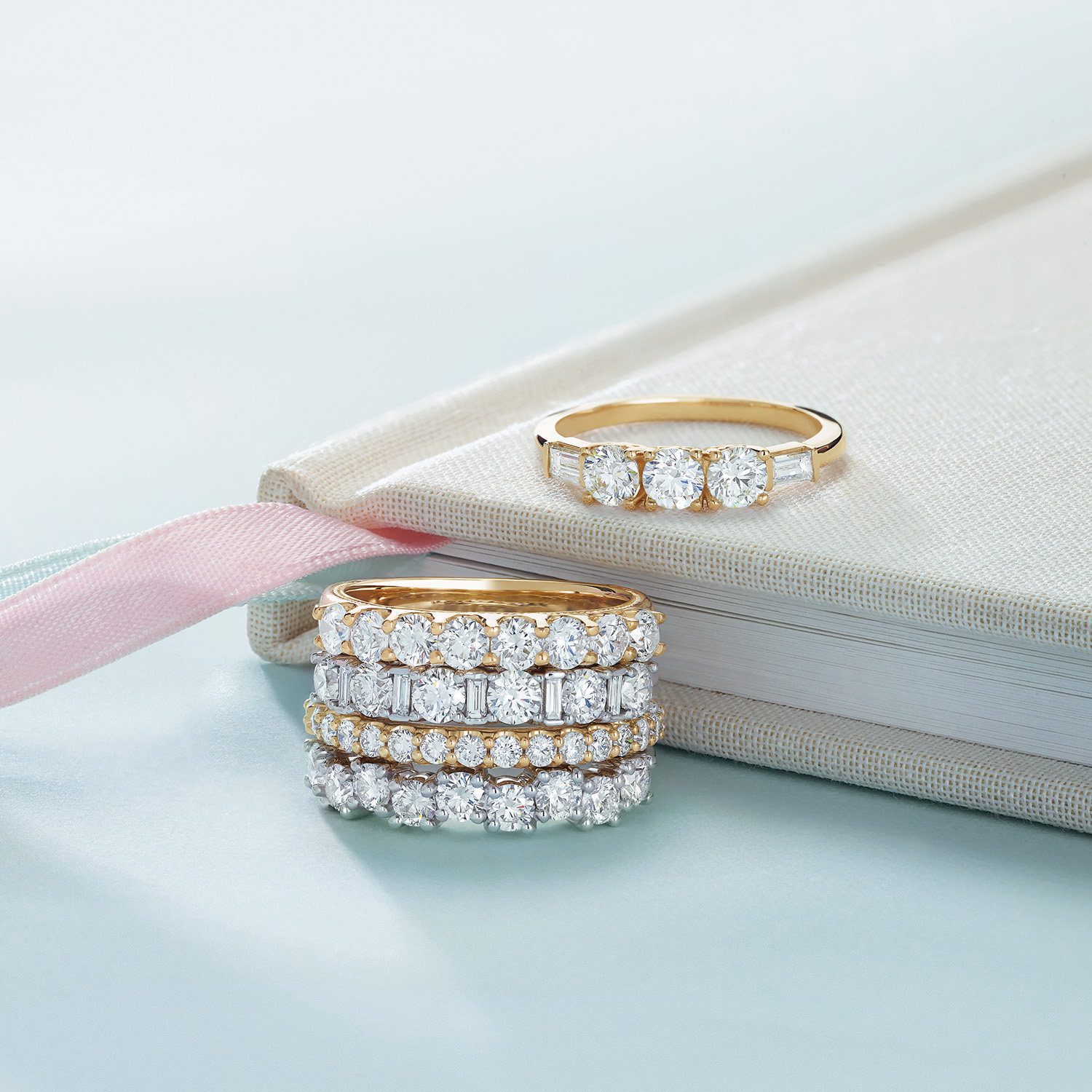Lab-grown diamonds have become increasingly popular as an ethical, sustainable, and cost-effective alternative to mined diamonds. With more consumers seeking out environmentally-friendly options for their jewelry purchases, lab-grown diamonds are quickly gaining recognition in the diamond industry. But what exactly are they, and how do they compare to natural diamonds? In this comprehensive guide, we’ll explore everything you need to know about lab-grown diamonds, from how they are made to their pros and cons.
What Are Lab-Grown Diamonds?
The Definition of Lab-Grown Diamonds
Lab-grown diamonds, also known as synthetic diamonds or man-made diamonds, are diamonds that are created in a laboratory using advanced technology to simulate the natural diamond-growing process that occurs deep within the Earth’s crust. These diamonds are chemically, physically, and optically identical to their natural counterparts but are made in a fraction of the time.
There are two primary methods used to create lab grown diamonds guides:
1. High Pressure High Temperature (HPHT)
HPHT mimics the natural conditions found deep within the Earth, using high pressure and temperature to create diamonds. This method typically involves a carbon source, a metal catalyst, and a seed diamond placed in a press. The resulting diamond crystal is then refined and cut into jewelry.
2. Chemical Vapor Deposition (CVD)
CVD diamonds are grown by introducing carbon-rich gases into a vacuum chamber, where they are heated until the carbon atoms bond to form diamond crystals. This method is widely used to create diamonds of higher clarity and larger sizes.
Lab-Grown Diamonds vs. Mined Diamonds
Chemical and Physical Properties
Both lab-grown and mined diamonds are composed of pure carbon atoms arranged in a crystalline structure, making them virtually identical in terms of chemical composition, hardness, and appearance. They both score a 10 on the Mohs scale of hardness, meaning they are extremely durable and suitable for everyday wear.
The Key Differences
-
Origin: The most significant difference between lab-grown and mined diamonds is their origin. While mined diamonds are extracted from the Earth through mining processes, lab-grown diamonds are cultivated in controlled environments in laboratories.
-
Price: One of the main reasons people are turning to lab-grown diamonds is their affordability. Lab-grown diamonds can cost up to 40% less than natural diamonds, making them a more budget-friendly option for consumers.
-
Environmental Impact: Mining natural diamonds has a significant environmental impact, including deforestation, water pollution, and ecosystem disruption. On the other hand, lab-grown diamonds have a smaller carbon footprint, as their production does not require harmful mining practices.
-
Ethical Considerations: Lab-grown diamonds are often viewed as a more ethical choice, as they do not involve human rights abuses or exploitative working conditions associated with some diamond mining operations, particularly in conflict zones.
The Benefits of Lab-Grown Diamonds
1. Affordability
One of the primary advantages of lab-grown diamonds is the cost. Lab-grown diamonds are generally much more affordable than natural diamonds due to lower production costs. Consumers can purchase larger, higher-quality diamonds at a fraction of the price they would pay for a mined diamond of the same size.
2. Ethical Sourcing
Lab grown diamonds are often seen as a more ethical choice since they do not involve destructive mining practices or contribute to the exploitation of workers in dangerous conditions. They are free from the issues related to “blood diamonds” or “conflict diamonds,” which are often associated with human rights abuses.
3. Environmental Benefits
As mentioned earlier, lab-grown diamonds are more sustainable compared to mined diamonds. They have a significantly lower carbon footprint and do not contribute to the environmental destruction caused by traditional diamond mining. If you’re looking for an eco-friendly jewelry option, lab-grown diamonds are an excellent choice.
4. Customization and Quality Control
Because lab-grown diamonds are created in a controlled environment, there is more flexibility when it comes to customizing the diamond’s size, shape, and quality. Additionally, lab-grown diamonds tend to have fewer inclusions and higher clarity, making them perfect for those who want a flawless stone.
How to Choose the Best Lab-Grown Diamond
1. Understand the 4Cs of Diamonds
Whether you’re buying a lab-grown diamond or a natural one, you should always consider the Four Cs—Cut, Color, Clarity, and Carat weight—when making your purchase.
- Cut: The way a diamond is cut affects its brilliance and sparkle. A well-cut diamond will reflect light in a beautiful way.
- Color: Lab-grown diamonds come in various color grades, with D being the most colorless and Z being the most yellow. A higher-grade diamond will have less color and will appear more transparent.
- Clarity: Clarity refers to the presence of inclusions or blemishes within the diamond. Lab-grown diamonds are often clearer than mined diamonds.
- Carat Weight: Carat refers to the size of the diamond. Larger diamonds tend to be more expensive, but lab-grown diamonds offer more size for less cost.
2. Certifications Matter
Look for diamonds that are certified by reputable organizations like the Gemological Institute of America (GIA) or the International Gemological Institute (IGI). A certification ensures that the diamond’s quality has been evaluated by professionals and meets industry standards.
3. Choose a Reputable Retailer
When buying a lab-grown diamond, it’s essential to choose a reputable and trusted retailer. Research online reviews, ask for recommendations, and make sure the retailer provides full transparency regarding the diamond’s origin and certification.
Are Lab-Grown Diamonds a Good Investment?
While lab-grown diamonds are more affordable than mined diamonds, they may not have the same long-term value. Natural diamonds are often seen as a store of value, as they are rare and have historically appreciated over time. Lab-grown diamonds, being more readily available, may not hold their value in the same way. However, for those seeking a beautiful, affordable, and ethical diamond for their engagement ring or jewelry collection, lab-grown diamonds are an excellent choice.
Conclusion: Lab-Grown Diamonds Are the Future of Jewelry
As consumer preferences shift towards sustainability, ethical sourcing, and affordability, lab-grown diamonds are gaining popularity in the jewelry industry. With the same beauty, durability, and brilliance as mined diamonds, lab-grown diamonds offer a modern alternative that aligns with the values of today’s conscious consumers. By choosing lab-grown diamonds, you’re making an investment in both beauty and sustainability, ensuring a future where diamonds can be enjoyed without compromising the planet.






